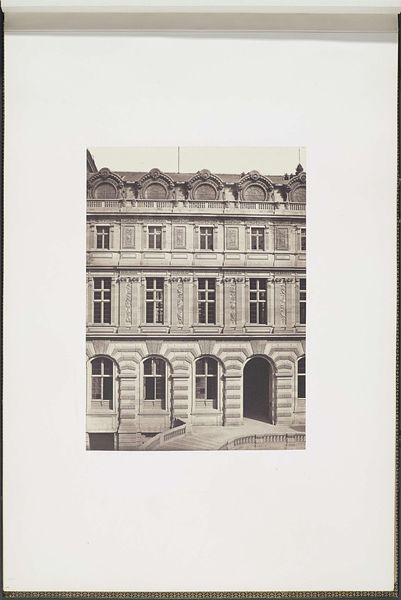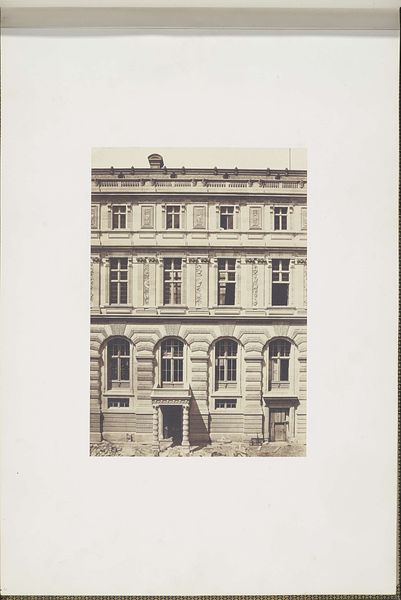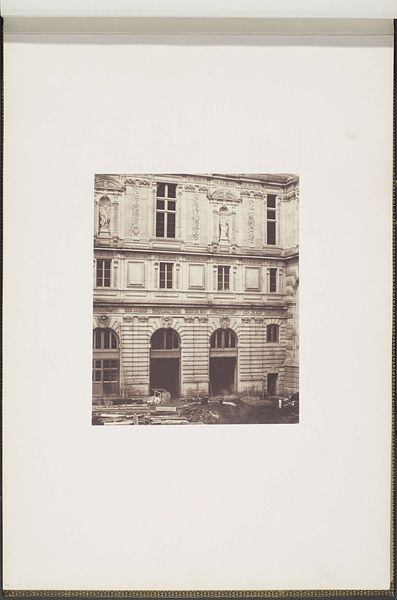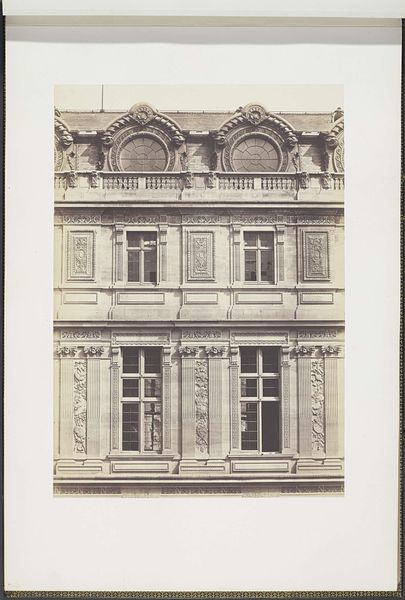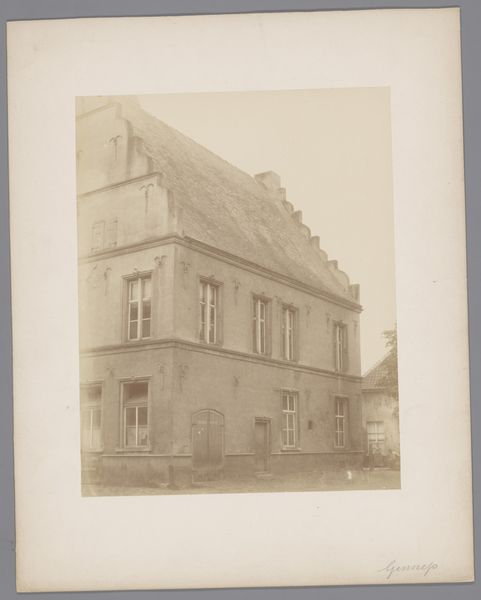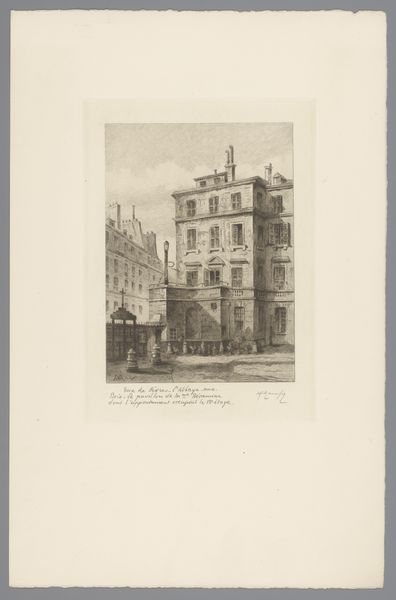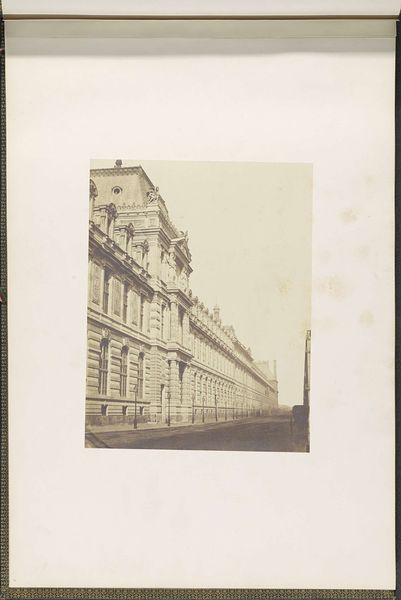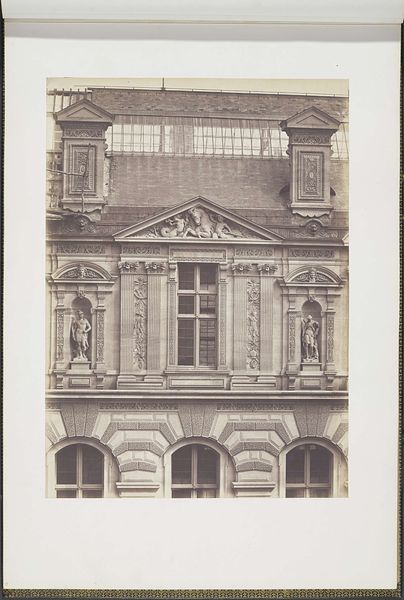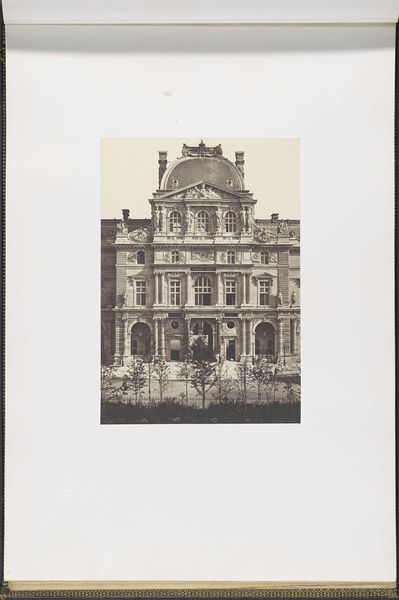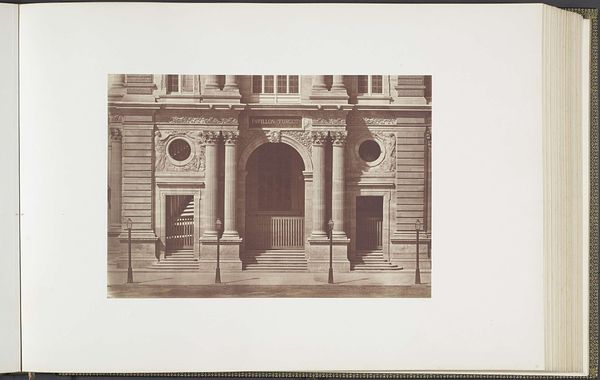
Nieuwe Louvre in aanbouw: gezicht op de noordgevel aan de Cour Visconti c. 1857
0:00
0:00
edouardbaldus
Rijksmuseum
daguerreotype, photography, site-specific
#
neoclacissism
#
landscape
#
daguerreotype
#
photography
#
site-specific
#
cityscape
#
building
Dimensions: height 378 mm, width 556 mm
Copyright: Rijks Museum: Open Domain
Curator: Edouard Baldus’s photograph, taken around 1857, presents the “Nieuwe Louvre in aanbouw: gezicht op de noordgevel aan de Cour Visconti," housed here at the Rijksmuseum. It's a study in architectural progress. Editor: There's a muted beauty to this image. It feels melancholic, like peering into a memory tinged with sepia tones, or perhaps an architectural elegy? Curator: Baldus was commissioned during a period of intense construction in Paris. He documented the massive transformations driven by Napoleon III and Baron Haussmann, essentially crafting visual propaganda meant to impress with grand projects such as the expanded Louvre. Editor: Visual propaganda indeed! Still, it is beautiful in capturing that frozen moment of endeavor, like history breathing. Look at the stones lying around—raw material waiting for destiny. You can almost feel the city holding its breath! What strikes me is the incomplete roof. Curator: The glass and iron roofing techniques evident there point towards the changing methods and materiality. These large-scale projects employed novel industrial materials, facilitated by the emerging railway networks across Europe allowing the relatively easy transport of such material. This breaks down the concept of fine art when discussing what really contributes to culture. Editor: Ah, always back to brass tacks, the tangible underpinnings! I find it fascinating, actually, that this "propaganda," as you termed it, ironically shows such an unfinished state. It reveals a rare peek at a place caught betwixt eras: not entirely classical, not modern. Curator: True. These documentary images contributed massively to the Neoclassical architectural image and by immortalizing this moment, elevate and commodify the new face of power in bricks and mortar and carefully planned angles. The artist may aim to produce what is considered 'art,' yet the results transcend these fine art expectations to become incredibly valuable material culture references. Editor: So, essentially, we see the power of infrastructure—almost as if a skeleton of a future giant were lying exposed to us… What's revealed beneath a facade interests me more than the intended impression. A lovely photo with a muted energy, for all of its silent declaration.
Comments
No comments
Be the first to comment and join the conversation on the ultimate creative platform.
